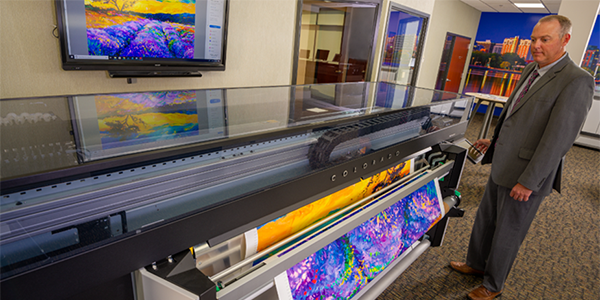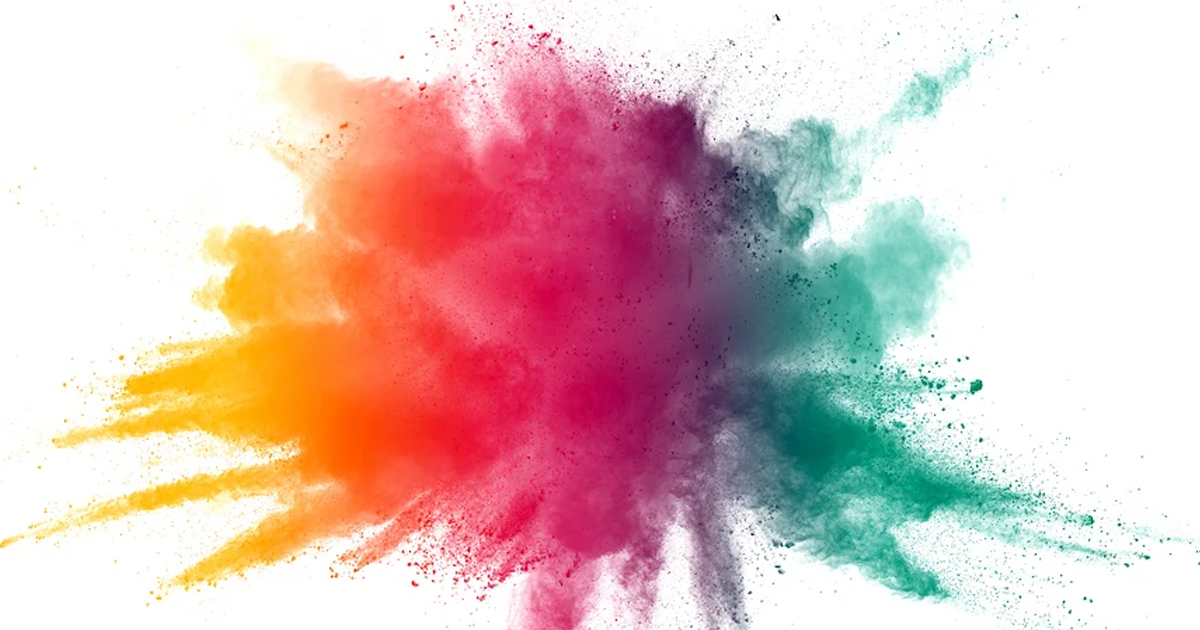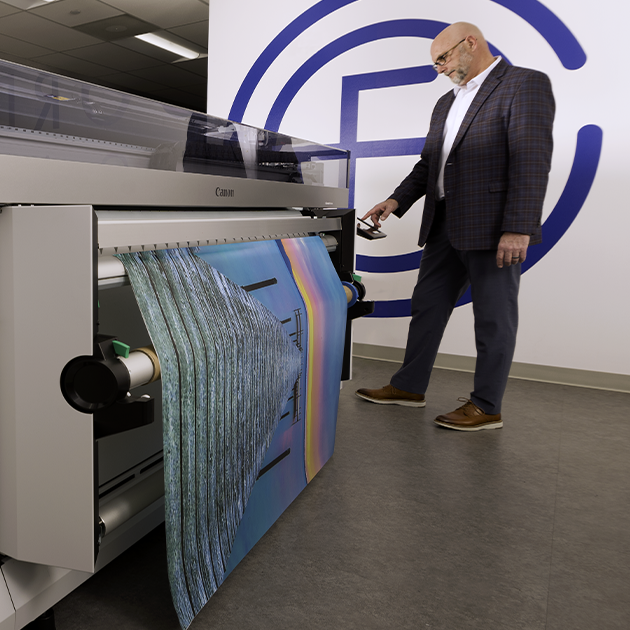If you visit any Gordon Flesch Company demo showroom, the first thing you’ll notice is a giant photograph of the local downtown area, blown up to cover an entire wall. It’s an arresting image, and we believe it’s the kind of thing more businesses should do to impress and welcome visitors to an office, store or event.
The most impactful and eye-catching creative content is produced with large-format printers. The result is sleek, bold and beautiful imagery that will make an impact for any business, whether printing a mural for a wall or large posters or banners.
But enlarging a graphic doesn’t always produce the crisp, clear image you hoped for. Use these tips and tricks to help ensure your large-format printing projects are as true-to-life as possible.
Best DPI for Printing Large Photos
Smaller print sizes like standard posters or brochures typically require a minimum of 300 dots per inch (dpi) or pixels per inch (ppi), up to 600 dpi. Large-format printing, however, typically uses image files that are 100 dpi resolution. If the dpi is much larger than that, the file size would be extremely large.
EXAMPLE: If you want a 48"×72" large-format print, the image size should be 4800 pixels (48 x 100) by 7200 pixels (72 x 100) at 100 dpi.
The resolution on large-format print jobs can be smaller because of how they’re viewed by the human eye. Unlike a brochure that’s viewed up close, most large-format projects are viewed from varying distances. Viewing distance is an important consideration for large-format graphics; the farther the viewing distance, the lower an image’s resolution can be.
While a photo print may appear pixelated close-up, it looks perfectly fine when viewed across a room. That said, when creating a large-format image, designers sometimes start out working with 300 dpi and adjust later. Design programs like Photoshop, Illustrator or InDesign might have a difficult time displaying images that large, so you may have to work at half or quarter scale. Of course, make sure to scale it back to full size before printing.
RELATED: Top 5 Production Print Challenges [INFOGRAPHIC]
Improve Image Clarity & Minimize Pixelation
When printing large-format images, look out for pixelated edges and noise – areas of random variation of brightness or color. When printing a photograph, even higher-resolution images, there are some colors or tones that will produce noise. For example, pale blue skies when printed at large scale may look splotchy. An experienced graphic artist can zoom in on the file and slowly blur out noise to reduce this effect.
The best file types to create an image from are vector files (.EPS or .SVG). No matter how much you increase a vector image, it will create a perfect line with no pixels. There will always be pixels in photographs, no matter how high resolution they are. Some photographs simply will not work for a large print format because their original resolution is too low.
PRO TIP: There are several new AI technologies that can enhance photos and manipulate them to improve their resolution for printing. They can even improve blurry images to make them look crystal clear. A simple online search will reveal several AI services that can help you accomplish this task, so don’t give up on an image before trying an AI tool.
File Formats for Large-Format Printers
Choosing the right file format is important when delivering the image to your printer. Here’s a quick overview of some of the most practical formats available:
Per our earlier recommendations, your graphic designers should create a vector file format like SVG (Scalable Vector Graphics). It’s always better if you work with vector graphics when possible and output them as a PDF, TIFF or EPS files. Avoid file formats like JPG and PNG for digital images, which may not produce the print quality and clarity you want.
Best Large-Format Printers
While file sizes, formats, resolutions and image quality are important, the finished product will only be as good as the printer it’s printed on. We recommend the leader in large-format print technology, Canon. There are numerous models available to choose from, so visit our large-format printer product page to learn about their different features.
There’s more to consider than image quality. View our infographic below to address other large-format printer issues.
Whether you’re looking to build your brand identity, upgrade your customer experience or achieve countless other business goals with large-scale visuals, our experts can guide you toward the best outcome possible. By creating, printing and installing custom-made large-format graphics, the print experts at Gordon Flesch Company can help you accomplish your unique business objectives, so contact us today.










